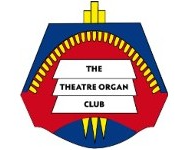Numbered A259, it is one of around 261 such organs built by the John Compton Organ Company of London to be installed in cinemas throughout the United Kingdom and The Republic of Ireland, more than any other builder of cinema organs in the UK during the period 1921 to 1939.
It is believed that it was installed in late 1934 or early 1935, along with A260, a smaller Compton organ in the Fyvie Hall of the Polytechnic.
The cinema had re-opened on 3 March 1927, after internal remodelling, with a notable jungle feature 'Chang - a Drama of the Wilderness' which was released that year. During the 1930s, film fare was varied but with the accent firmly on 'edifying entertainment', such as secondary runs of 'A Midsummer Night's Dream (1935),'David Copperfield' (1935) etc.
The cinema was leased from the governors of the Polytechnic and had to uphold the reputation of the establishment. In the word of the cinema trade it was intellectually select being the only West End house not to open on Sundays.
The cinema's organ has two manuals (keyboards) and contains six sets of orchestrally voiced pipes viz: Tibia, Tuba, String, Diapason, Vox Humana and Flute. There is also a synthetic Clarinet, which is derived from other pipes within the organ. A full set of tuned percussions comprising: Xylophone, Glockenspiel/Orchestra Bells, Chimes, Vibraphone and Carillion, as well as an orchestral traps unit (drums, cymbals, triangle etc) is also provided, all of which is contained in a room (known as the organ chamber) at the back of the stage.
The organ's volume is controlled by a set of shutters operated by way of a pedal connected electrically to the organ, and the whole thing is under the control of the organist from the organ console (or key desk). There are no 'automatic' effects, everything you hear from the organ is 'as it happens'.
Whilst the organ was new in 1934, it is thought that the organ's console was originally installed in the Carlton cinema Norwich in 1932. When the Carlton was enlarged, the opportunity arose to do the same to the organ, and a new, three manual console was provided, the old one returned to Comptons, and re-used at the Polytechnic (as it was then known).
The organ remained in use until, in the 1980s, it became unreliable due to lack of maintenance.
In 2005 Peter Hammond, of HWS Associates LLP, was approached to restore the organ, much of the pipe work having been removed but poorly stored. This done, the organ was used by The University of Westminster (as the building had now become) over a period of seven or so years until work began to transform the hall into the working cinema it now is.
Peter and his new company - Taylor Hammond Associates Ltd - was again engaged to undertake work on the organ, and a multiplex system was installed so that the console could be easily unplugged and moved.
This work also included re-spraying the console to fit in with the newly re-designed auditorium.
The organ's future also now looks bright, and the Theatre Organ Club is pleased to be able to sponsor organists to play for the weekly classic movies and it is believed that this is now the only cinema that retains its original pipe organ, to feature it as part of a regular weekly film show, and one of only four which remain in their original, working cinemas in the UK, something of which the Regent Street Cinema can feel justifiably proud.
